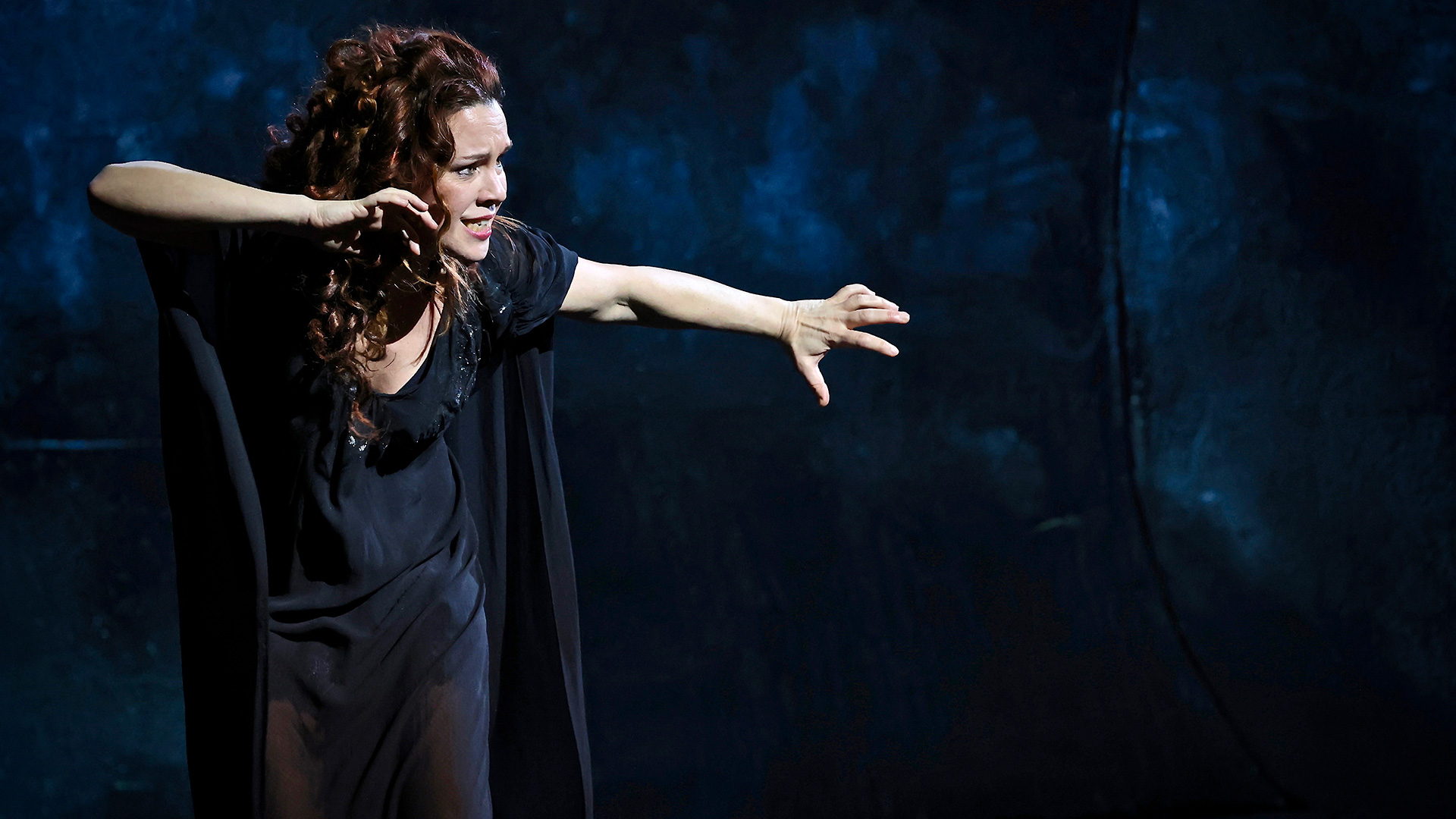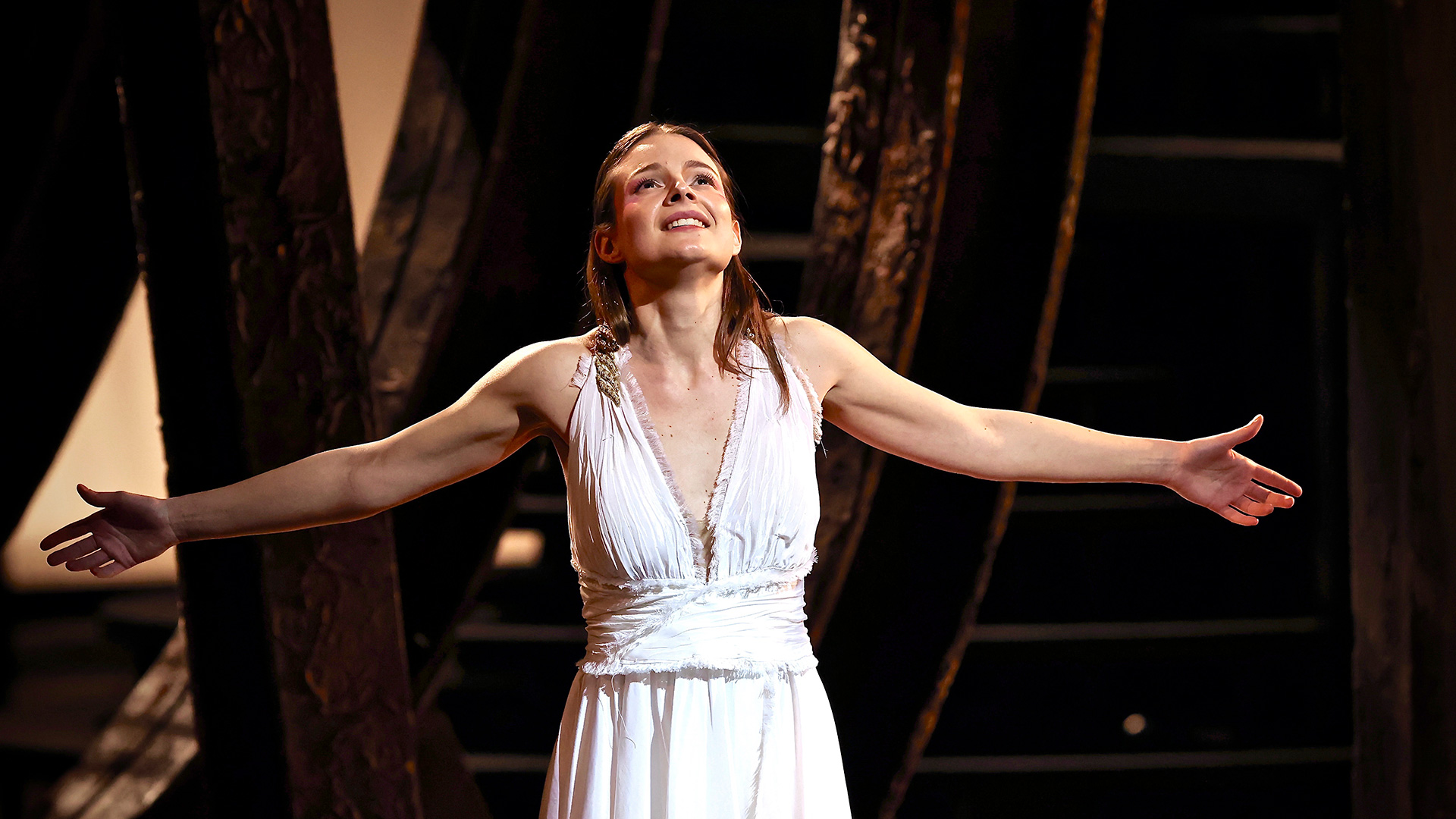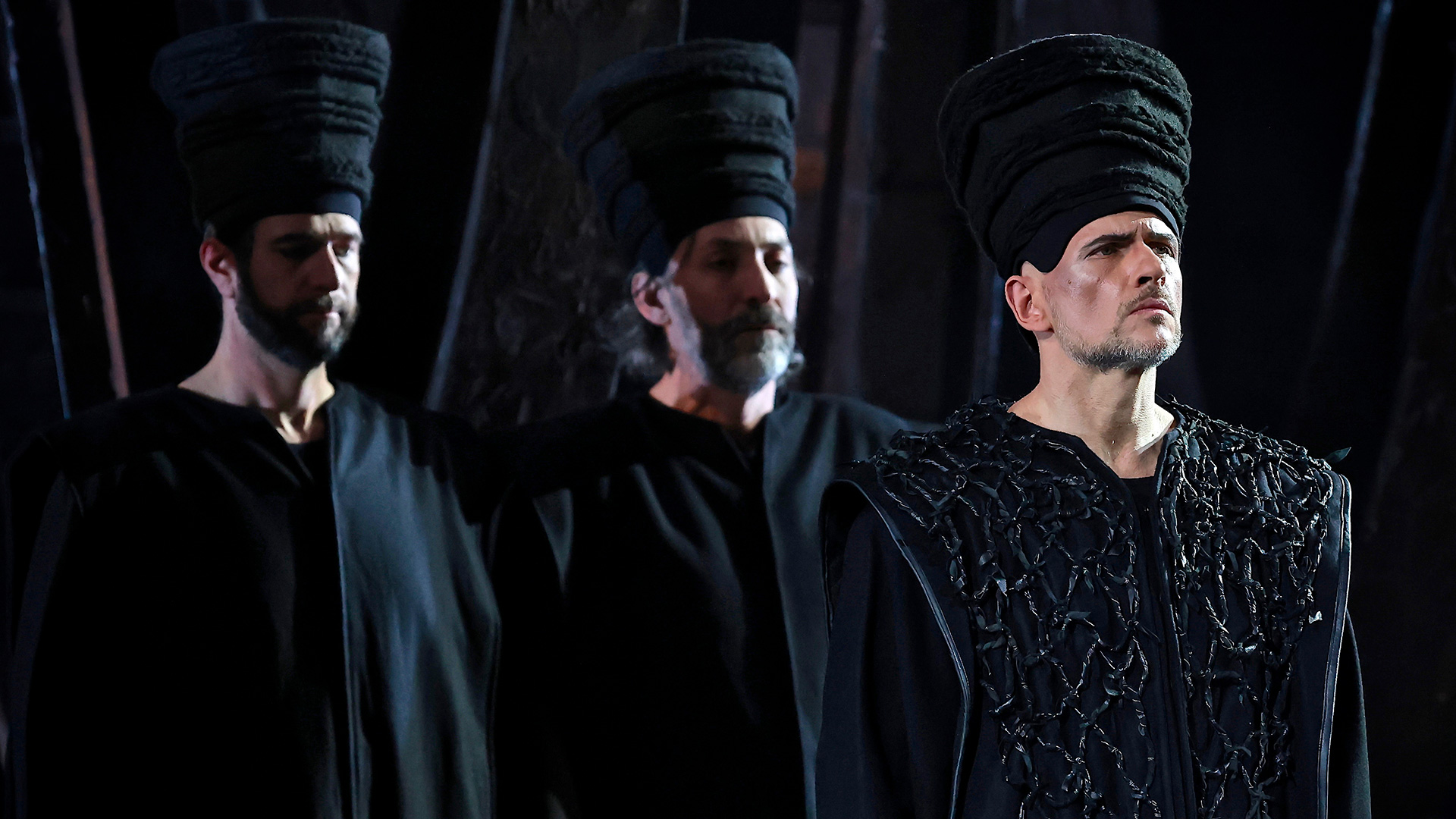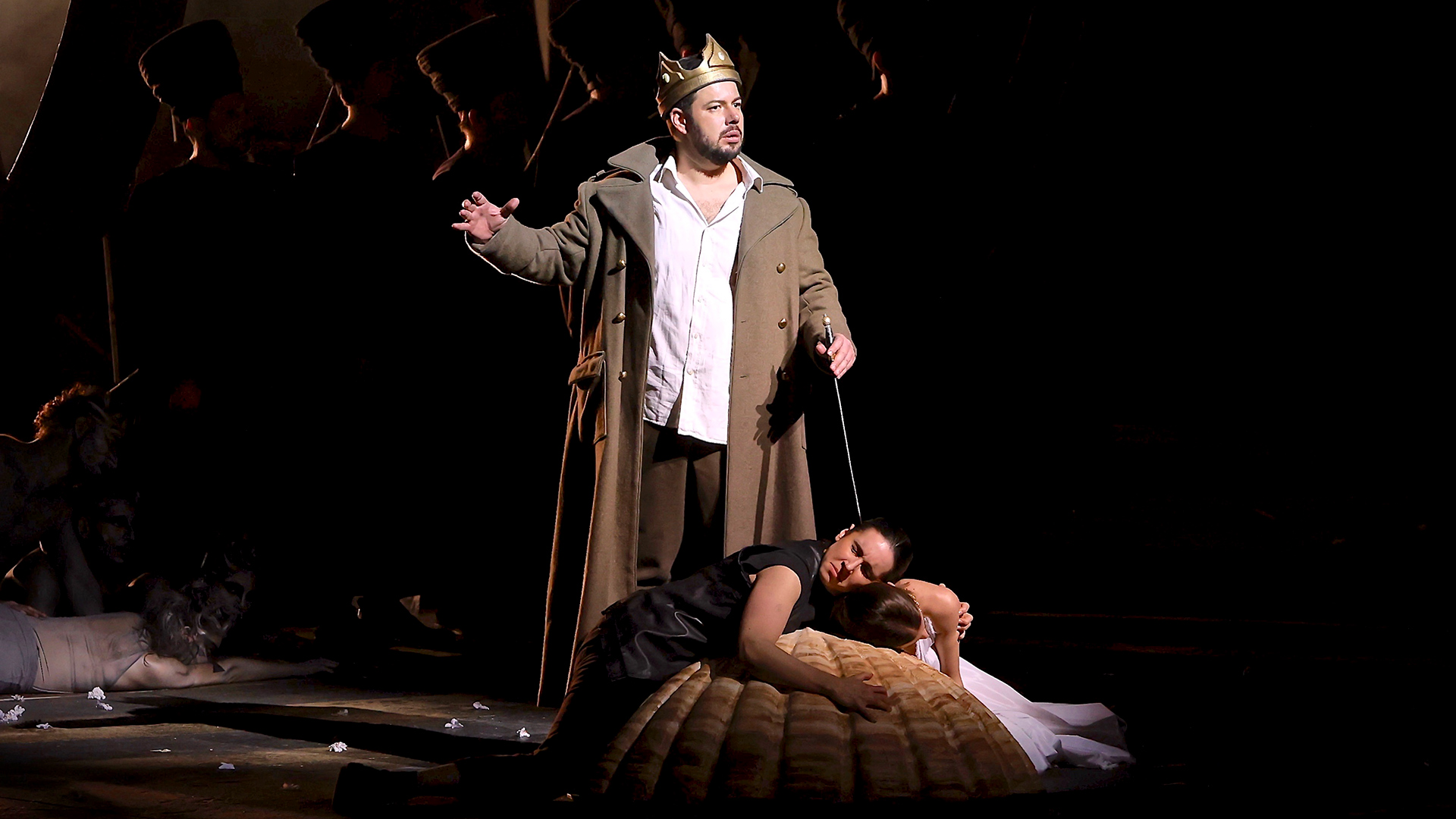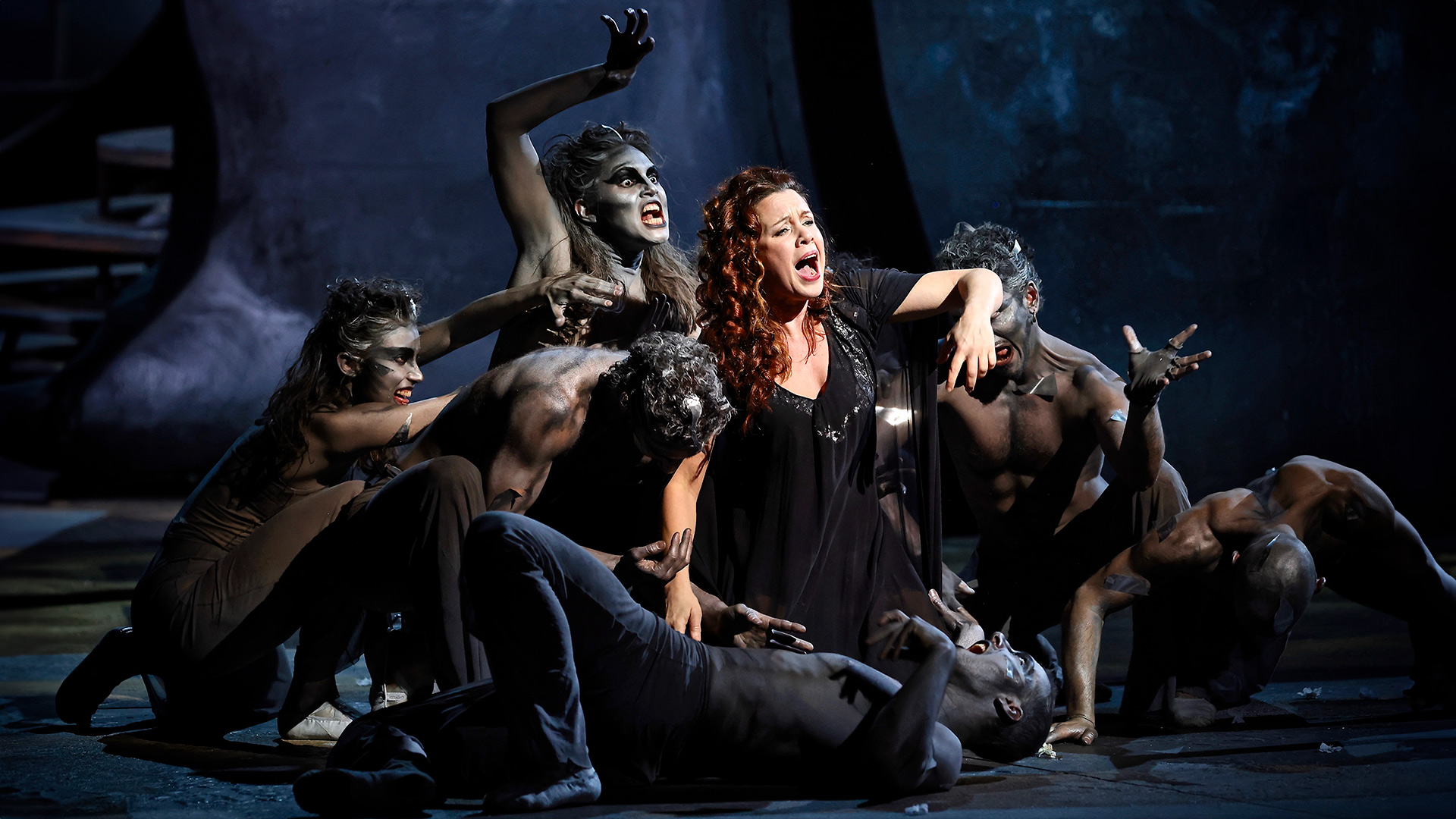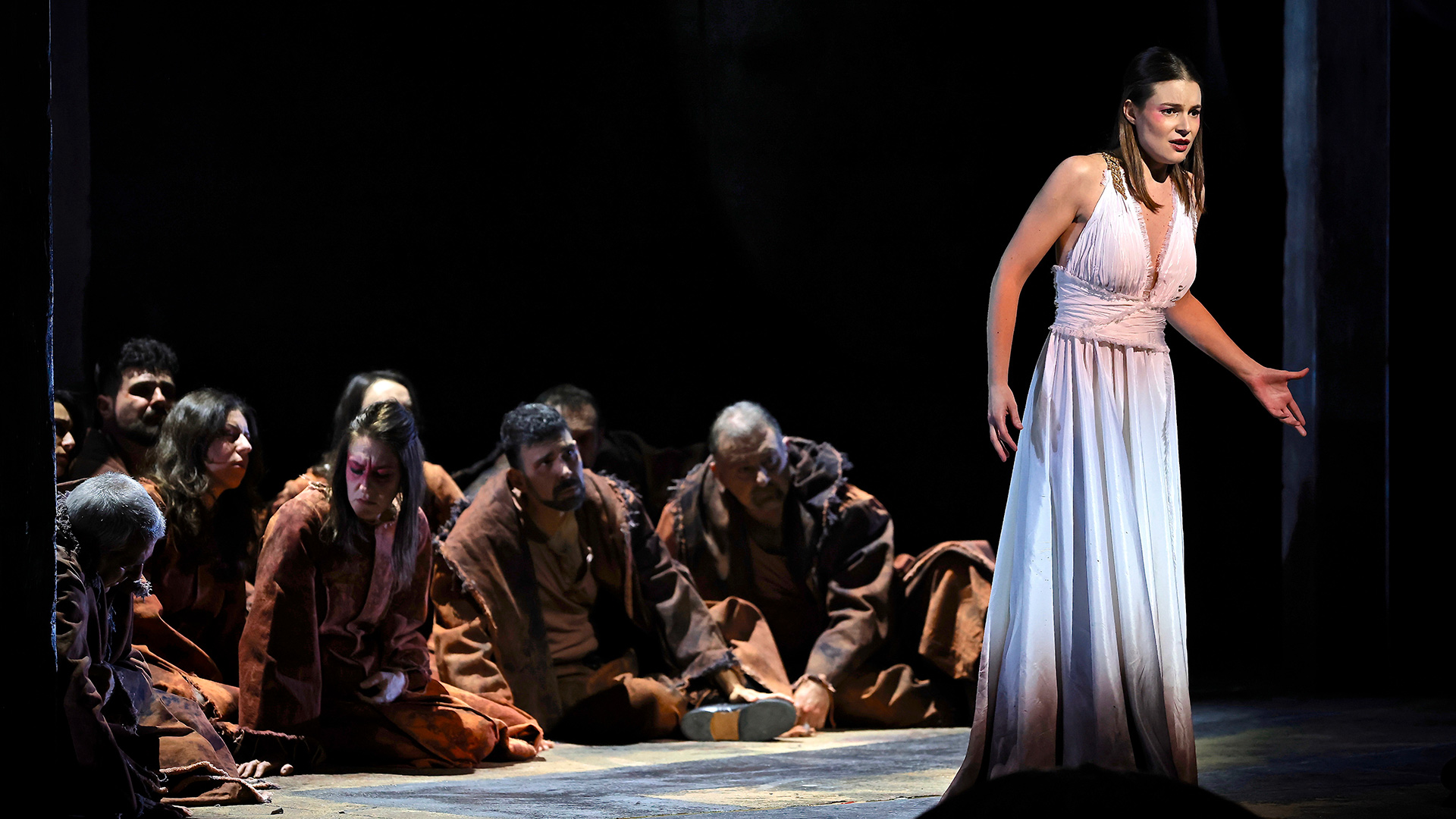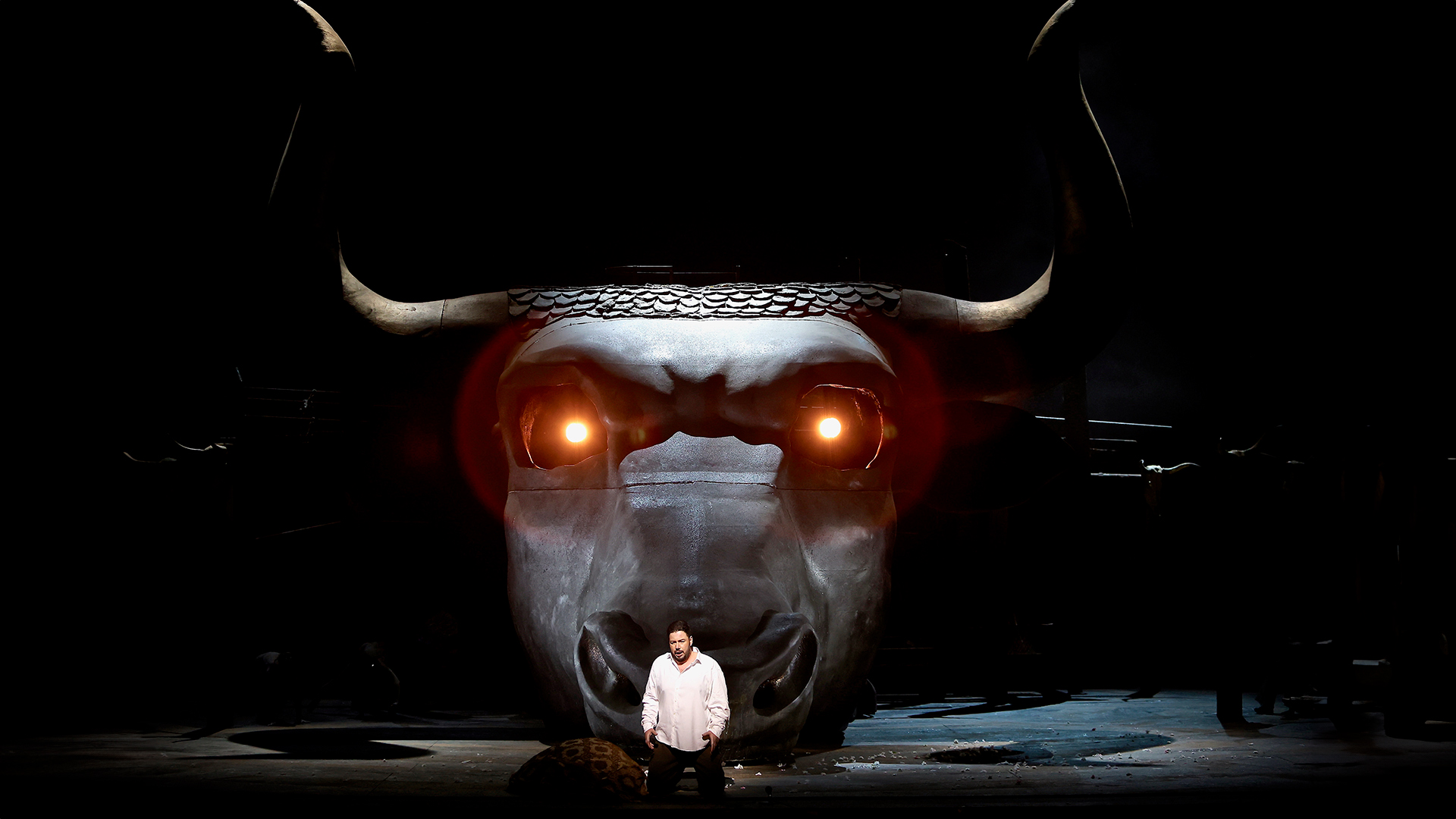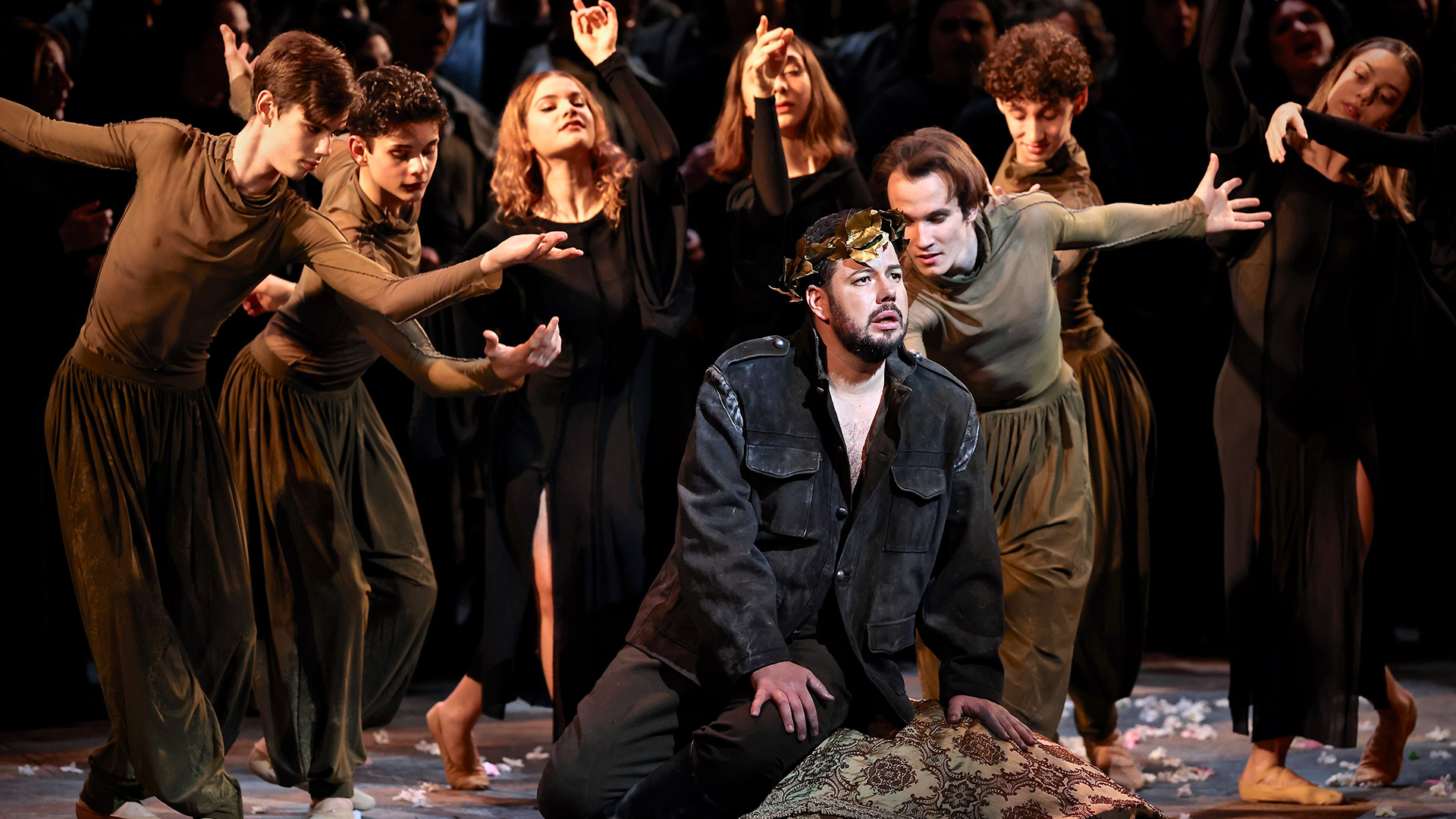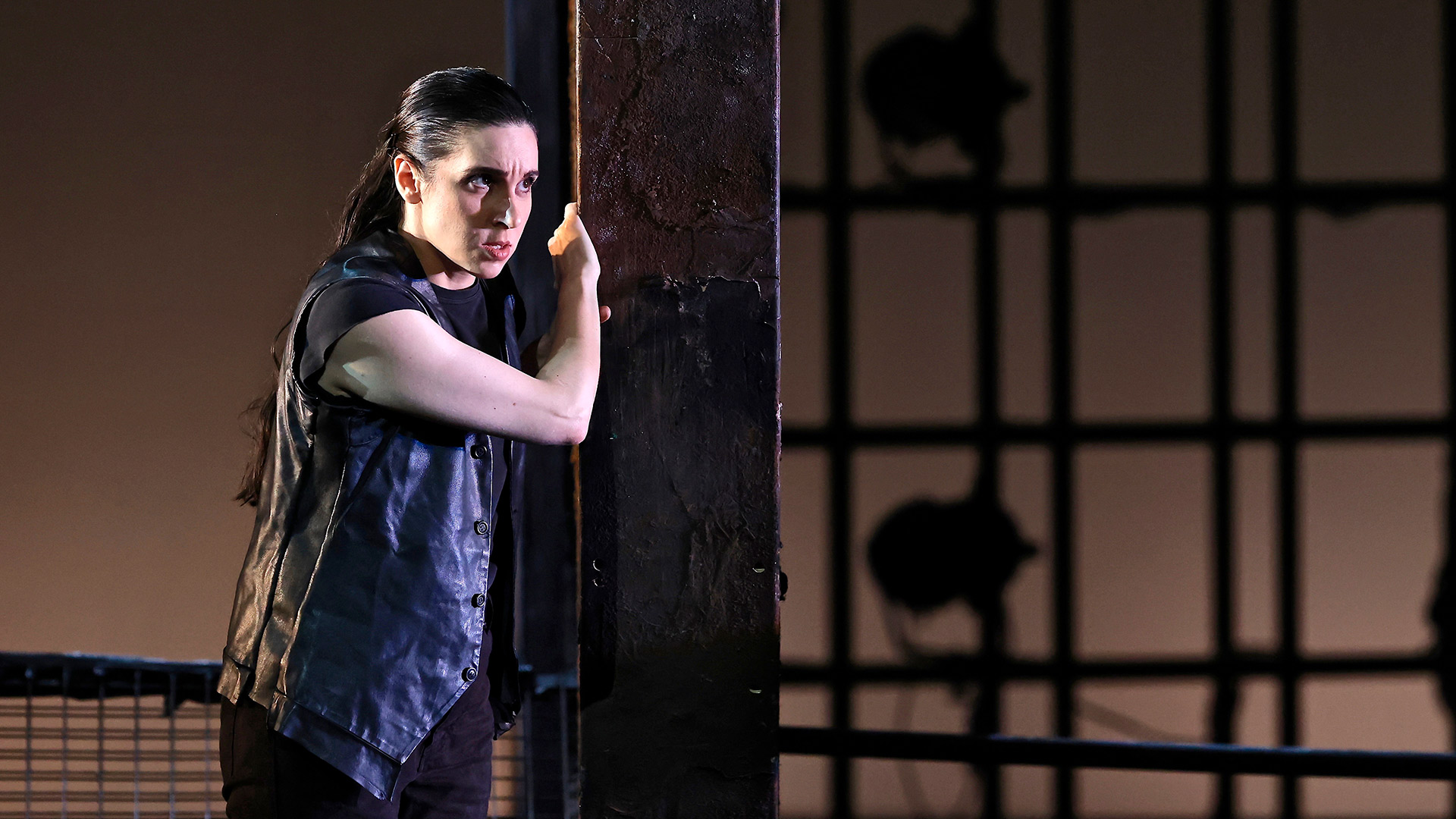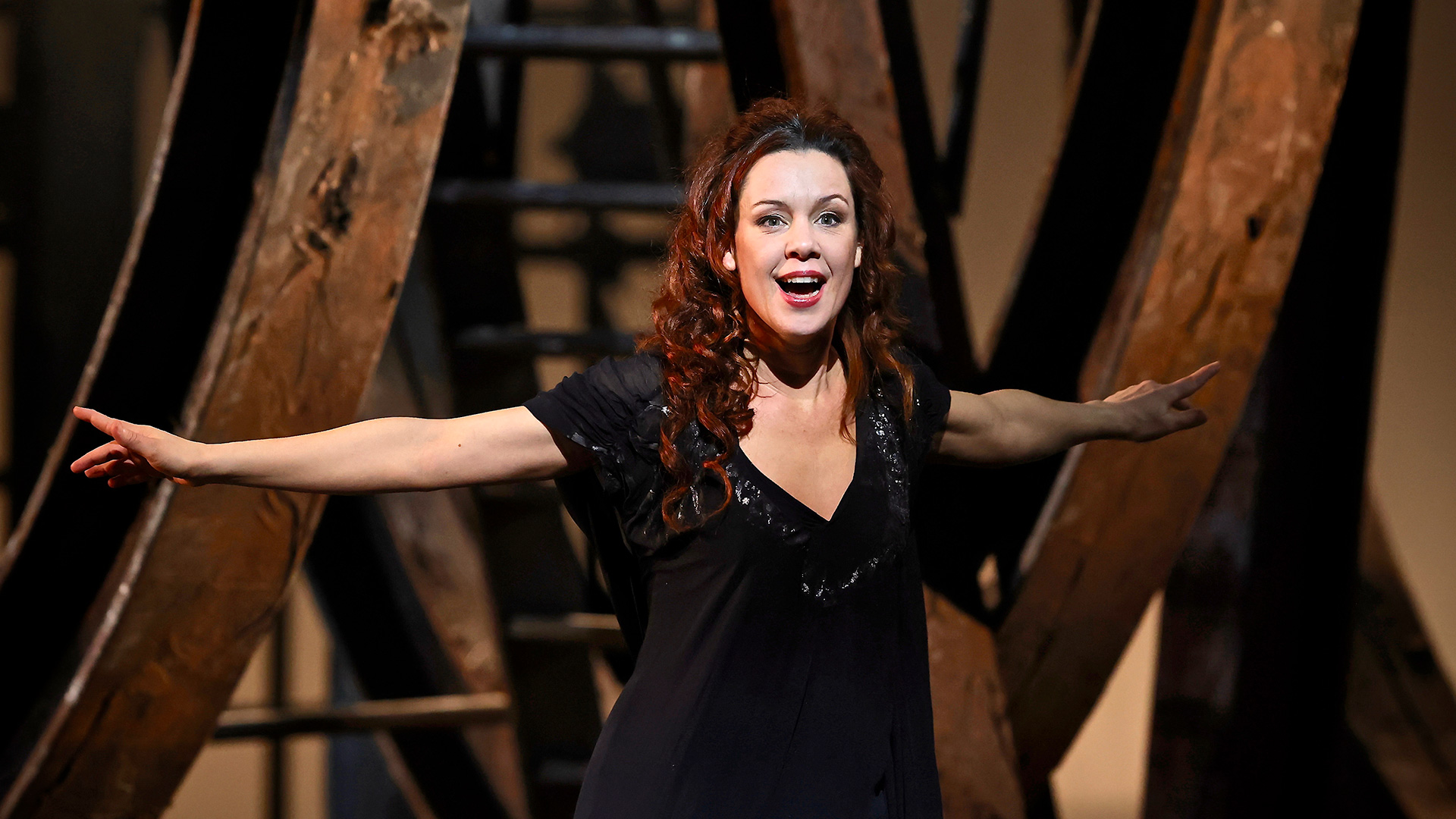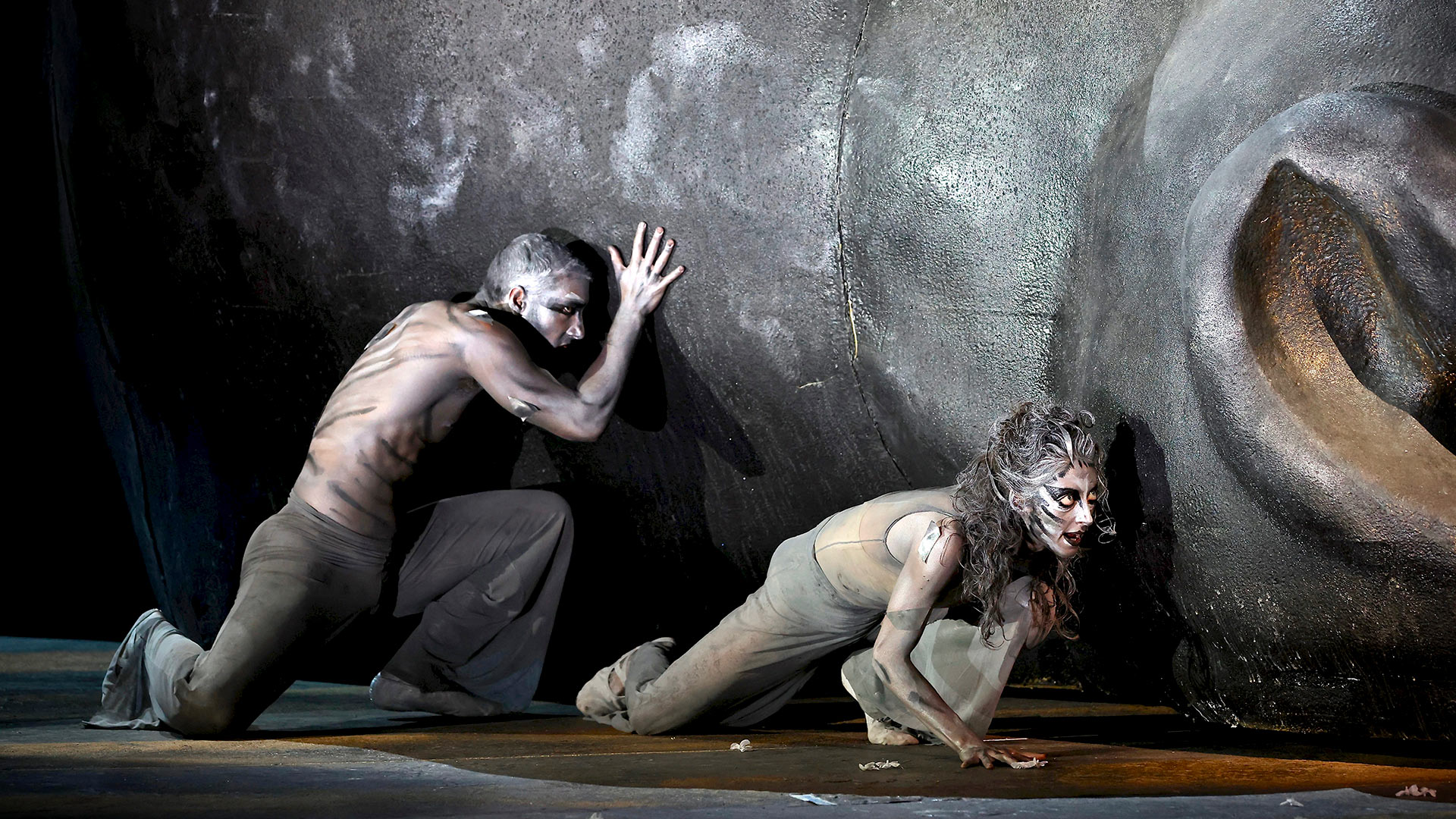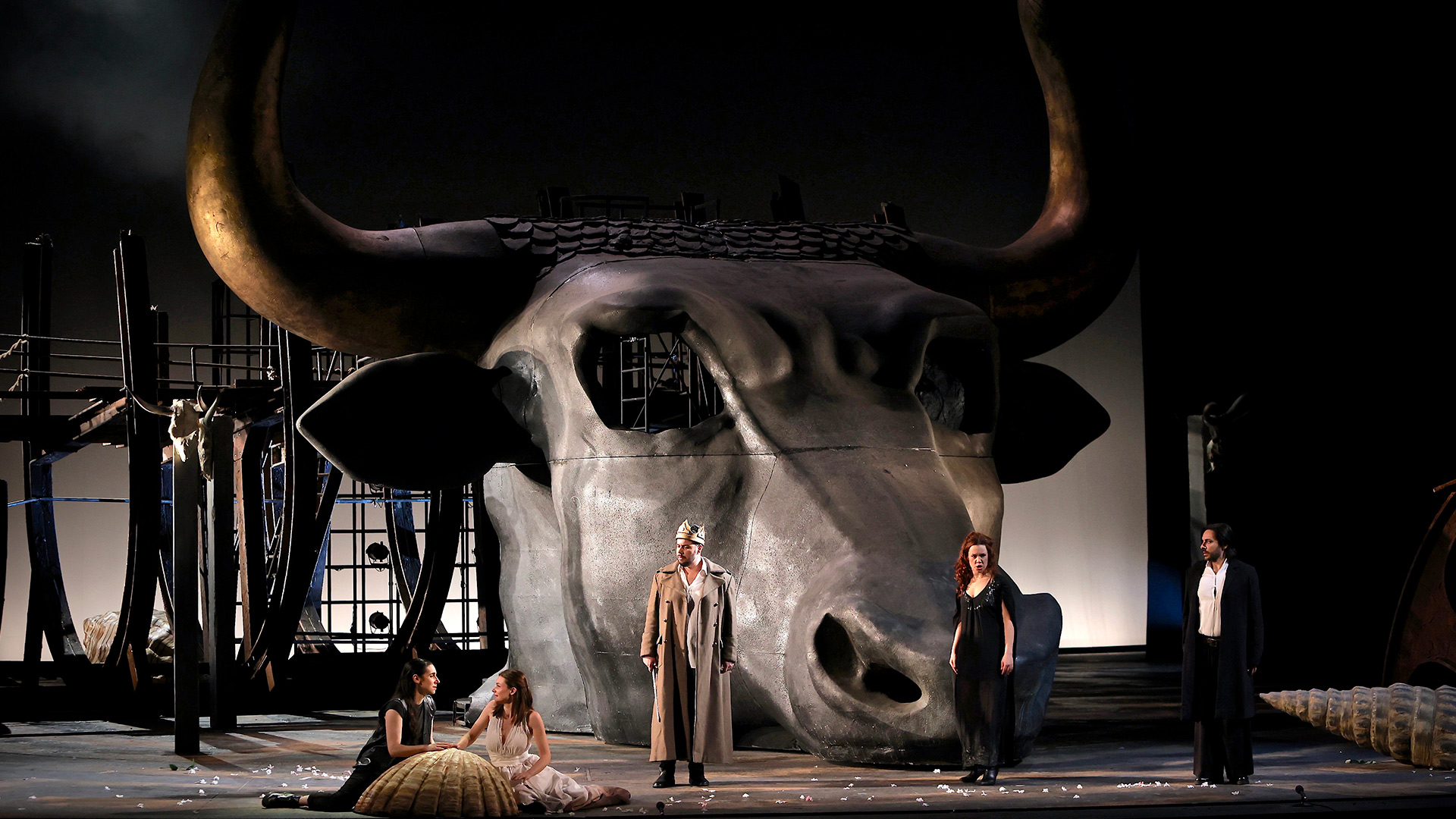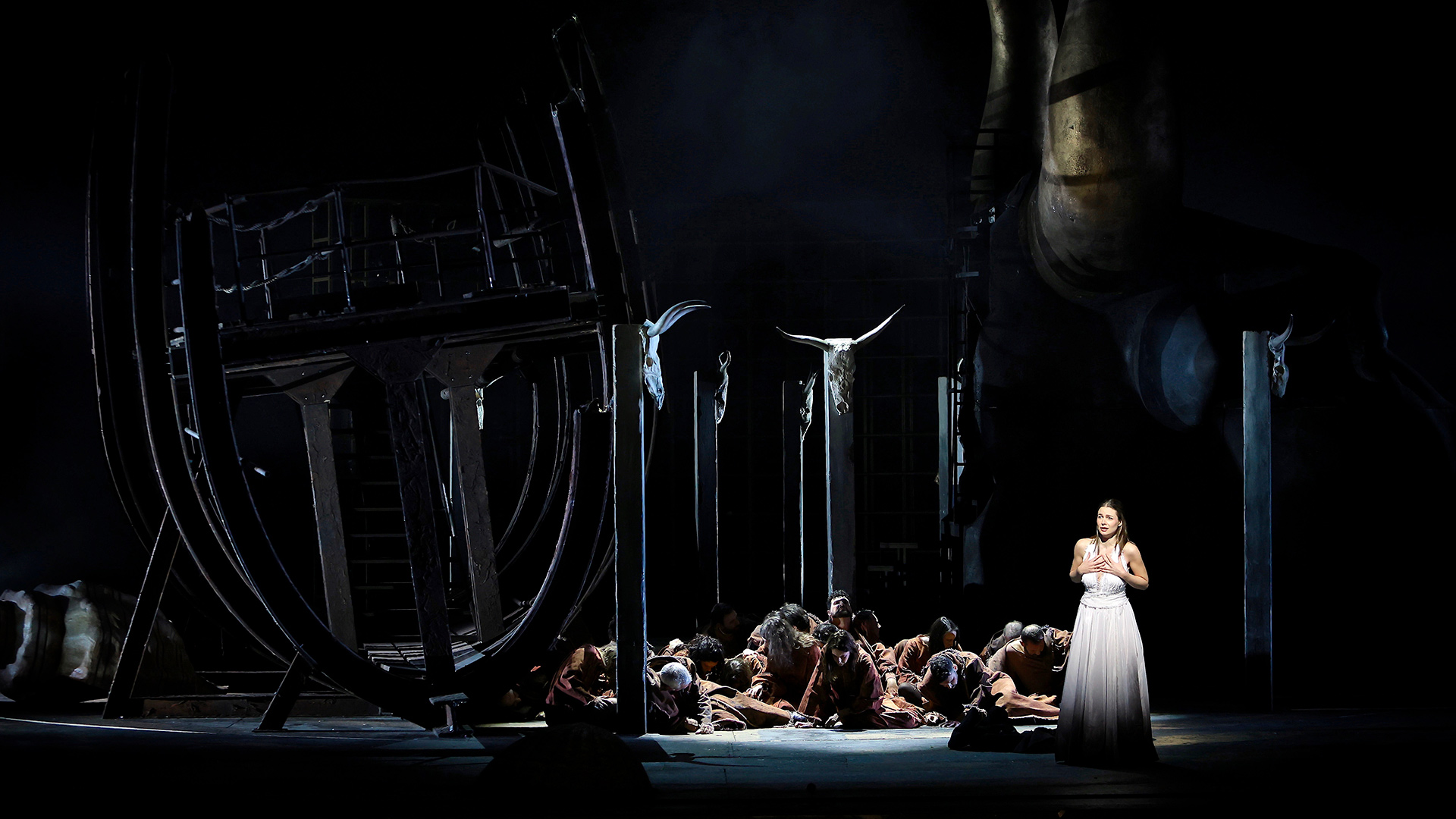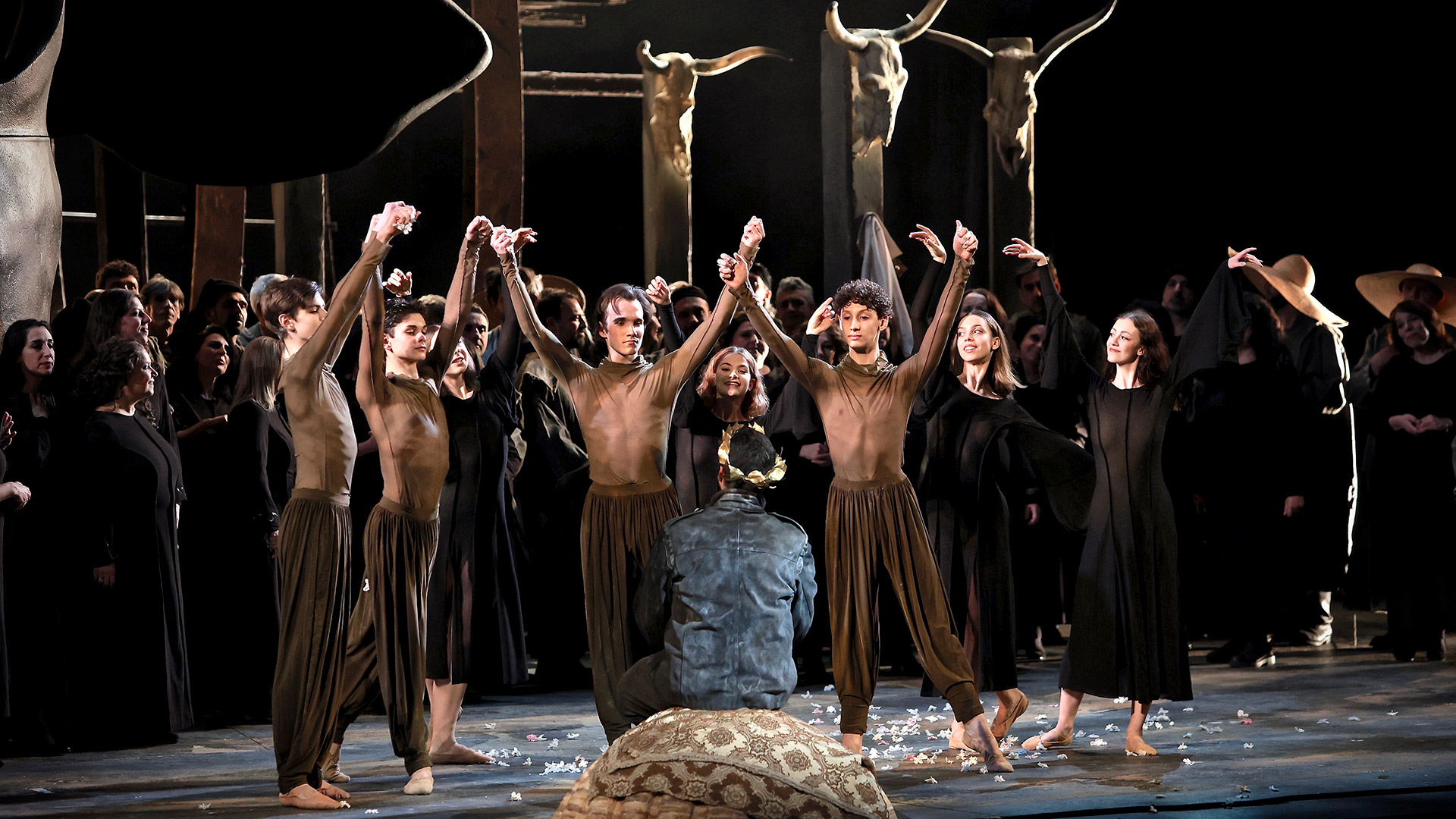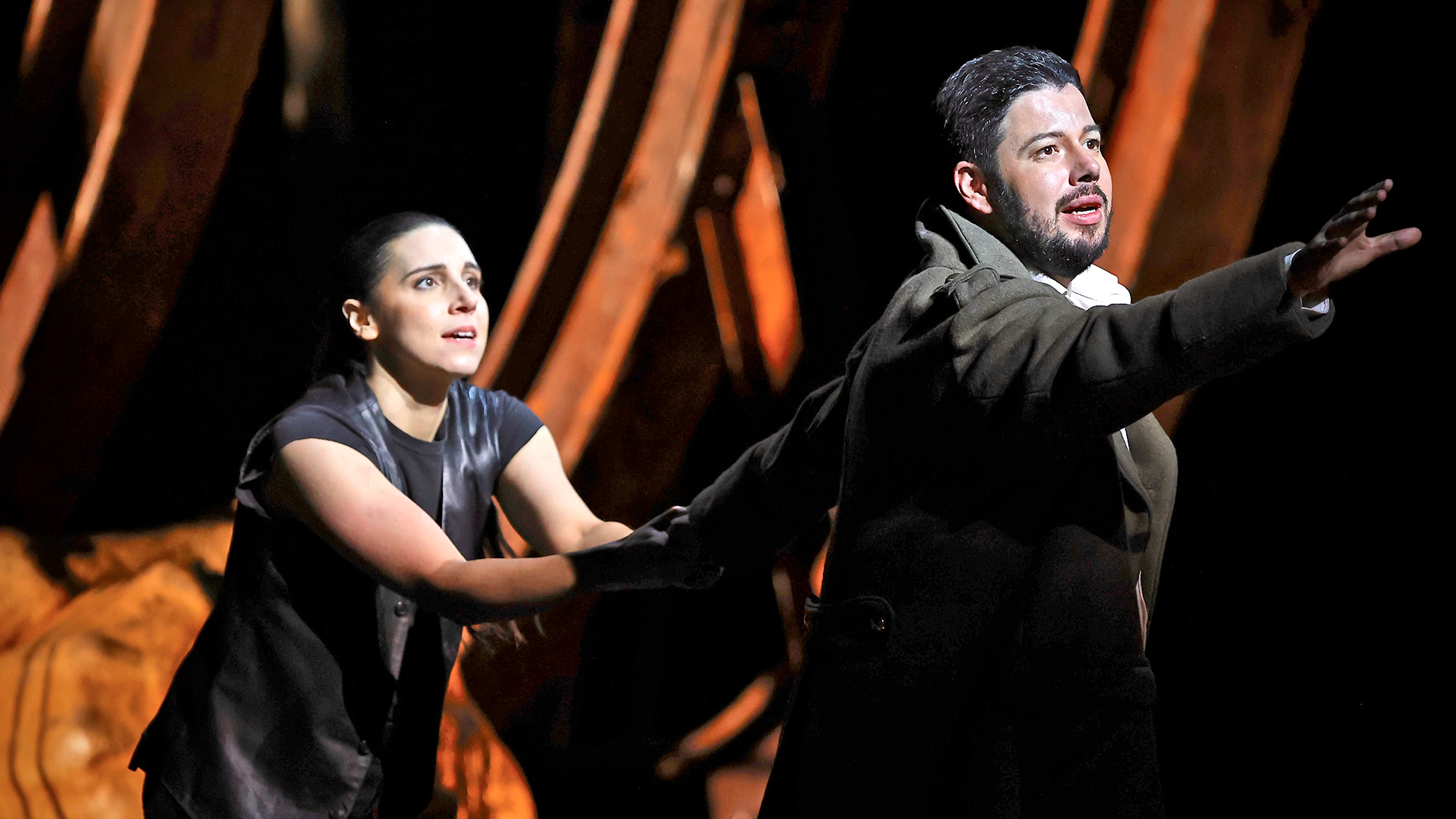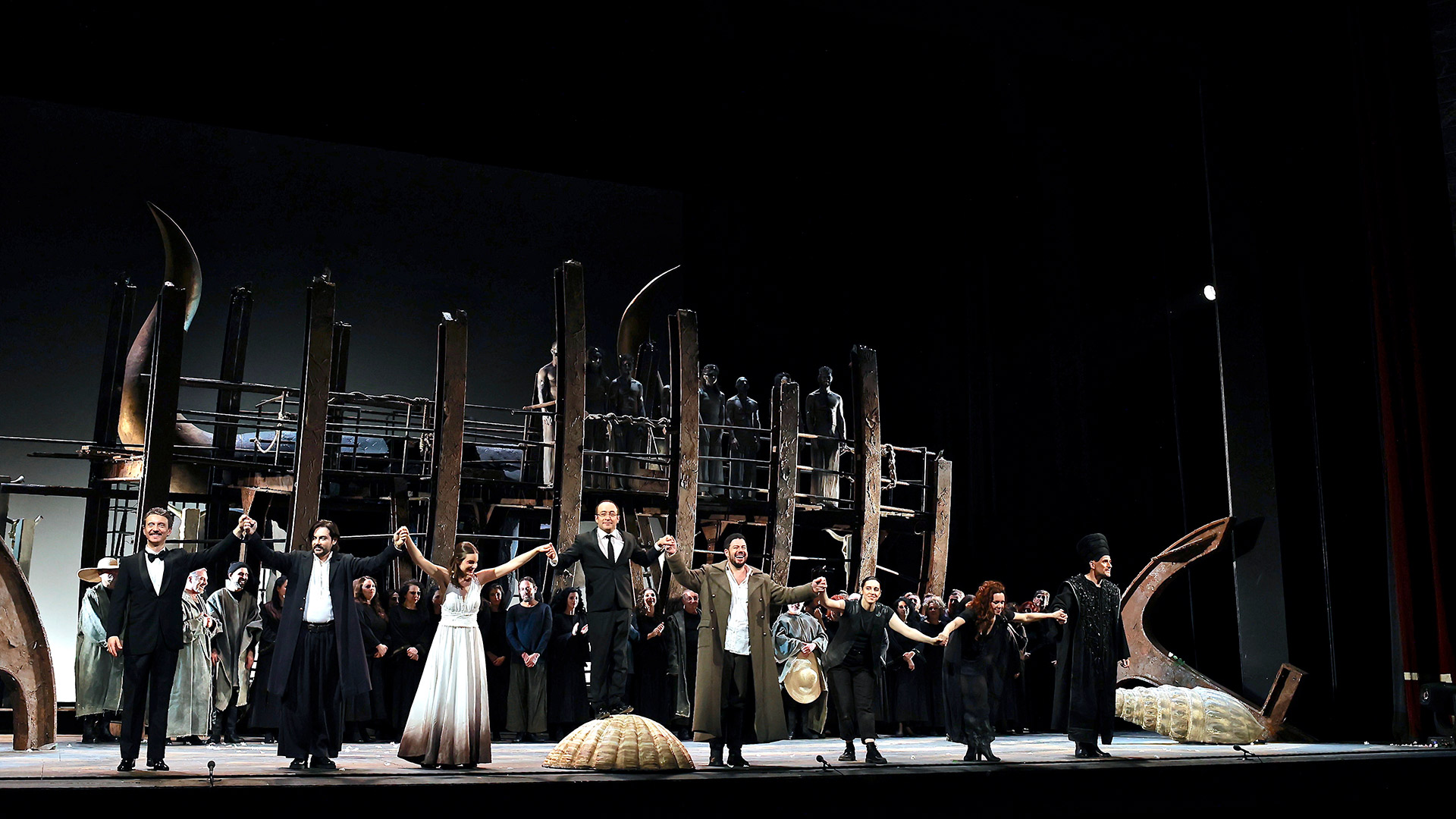Drama in music in three acts
Wolfgang Amadeus Mozart
with libretto by Gianbattista Varesco
Characters and interpreters:
Idomeneo
Antonio Poli
Idamante
Cecilia Molinari
Ilia
Benedetta Torre
Elettra
Lenneke Ruiten
Arbace
Giorgio Misseri
Gran Sacerdote
Blagoj Nacoski
Neptune’s Voice
Ugo Guagliardo
Two Cretans
Lucia Nicotra
Maria Letizia Poltini
Two Trojans
Damiano Profumo
Franco Rios Castro
Conductor
and orchestrator
Riccardo Minasi
Simone Ori (25)
Director
Matthias Hartmann
Set designer
Volker Hintermeier
Costume designer
Malte Lübben
Choreographer
Reginaldo Oliveira
Lighting design
Mathias Märker / Valerio Tiberi
Produced by Fondazione Teatro Carlo Felice di Genova
Orchestra, choir and technicians of Opera Carlo Felice
Claudio Marino Moretti, Choirmaster
Cello Antonio Fantinuoli
Harpsichord Sirio Restani
Balletto Fondazione Formazione Danza e Spettacolo “For Dance” ETS
Staging director
Luciano Novelli
Stage musical director
Simone Ori
Répétiteurs
Sirio Restani, Antonella Poli, Silvia Gasperini
Stage musical assistants
Andrea Gastaldo, Anna Maria Pascarella
other Choir Master
Patrizia Priarone
Lighting Master
Caterina Galiotto
Supertitle Master
Simone Giusto
Head of musical archives
Simone Brizio
Scenic director
Alessandro Pastorino
Vice scenic director
Sumireko Inui
Consolle supervisor
Andrea Musenich
Stage technicians foreman
Gianni Cois
Chief electrician/lighting booth
Marco Gerli
Tooling foreman
Tiziano Baradel
Audio/video foreman
Walter Ivaldi
Head of tailoring, shoemaking, make-up and wigs
Elena Pirino
Director’s assistant
Marika Petrizzelli
Assistant lighting designer
Emanuele Agliati
Make-up and hair co-ordinator
Raul Ivaldi
Sets and props
Fondazione Teatro Carlo Felice
Costume designer
Teatro alla Scala
Footwear
Un passo di stile srl
Wigs
Mario Audello
Surtitles by
Enrica Apparuti
Opera in brief
by Ludovica Gelpi
With Idomeneo – a drama for music in three acts – came the consecration of Mozart, then aged 25, in the sphere of opera seria. Previous titles include Mithridates, King of Pontus (1770), and Lucius Silla (1772), but the first real big break came in 1780. Mozart was working mainly in Salzburg, when he received a commission for an opera for the following year’s Carnival from the Elector of Munich, Charles Theodore. The possibility of a staging in the Bavarian city was attractive, as the Court Theatre regularly hosted productions of European importance and had one of the most internationally renowned permanent orchestras, the Mannheim Orchestra. The drafting of the libretto, on a subject already chosen by Carlo Teodoro, was entrusted to Gianbattista Varesco, a man of letters and chaplain to the archbishop of Salzburg. The story revolves around Idomeneo, king of Crete returning home after the fall of Troy, and his son Idamante. Because of a vow made to Neptune, the father is forced to sacrifice his son, after having tried in vain to make him flee the island; in the happy ending it is the god himself who prevents the horrible gesture, and Idamantes is crowned king. The main themes are deeply rooted in Greek literature and mythology: they deal with the complicated father-son bond, love thwarted by political contingencies, and the relationship between men and gods. The subject had previously been dealt with in the eponymous tragédie lirique by Antonie Danchet, set to music by André Campra in 1712. Varesco went back to Danchet’s text, translating it into Italian, but opting for a smoother adaptation of the story, now in three instead of five acts, and for more attention to the introspection of the characters. Varesco’s strictly Metastasian work was only appreciated to a certain extent by Mozart, who wanted on the one hand to rely on similar cultural models (the Italian opera seria but also the reform of Christoph Willibald Gluck), and on the other hand to introduce some more experimental features. Thus, in the autumn of 1780, the composer worked on the score and intervened on the libretto to make cuts and changes for the sake of greater coherence between text and music. Idomeneo was first performed on 29th January 1781 at the Hoftheater in Munich. The reception was very positive from the critics, although initially less so from the public, who were probably used to more traditional plays.
While the model was mainly the Italian and Gluckian opera seria, Mozart decided to move towards a more articulate stylistic pursuit. Resuming the structure based on alternating arias and recitatives, a fundamental choice was the introduction of several accompanied recitatives, so as to achieve more continuity in the orchestral and dramatic discourse. Again given the importance of the musical plan, ample space was given to orchestral, choral and choreographic numbers. Careful research is carried out around the vocalities of the individual characters, each vocal line being developed independently with multiple stylistic references (this has strictly to do with the psychological realism that characterises Idomeneo, and which goes so far as to anticipate certain elements of 19th century melodrama). The narrative plot favours on the one hand a good pace of action – the risky shipwreck in a storm, the political tensions between Crete and Troy, the loves of Idamantes, Electra and Ilia, the divine intervention – and on the other hand the right level of psychological insight. Idomeneo is a complex character: after having courageously participated in the victory at Troy and brought his fleet to safety, he finds himself having to come to terms with a dimension that is no longer warlike, grandiose, supernatural, but with an inner tragedy, namely the conflict of a king and father who must choose whether to sacrifice his kingdom or his son. The protagonist is no longer a victorious war hero, but a man living his own contradictions between light and shadow. For his part, Idamantes remains a uniquely positive character: he acts for the common good and often at the expense of his own interests, first as ruler in the absence of his father, and then as son. A clear dichotomy is represented in the two female characters: Ilia, destined to reign at Idamantes’ side, remains true to her sound principles, even proving herself ready to give her life to save her beloved. Electra, a legendary character, matricide par excellence, encapsulates exclusively negative feelings (the same love for Idamantes is expressed only through the idea of possession) and shows no mercy towards others at any time.
In the varied human ensemble portrayed, the drama mainly impresses with the elaboration of the model from a new perspective, both in musical invention and dramaturgical exposition. At a moment in history such as the 1780s, Idomeneo clearly hints at the possible developments of musical theatre in the decades to come.
